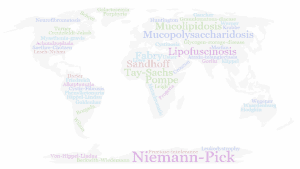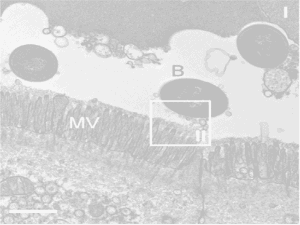The world is facing one of the biggest challenges of its recent history. We need to get back to 1918-1919, when the Spanish flu killed around 50 million people in the world, to observe a similar situation to the one we are currently living. Based on the numbers of the World Health Organization (WHO), COVID19 caused the death of almost 2.5 million people in the world and more than 60.000 in Spain to date [1]. Hence, it is logical that all the medical and scientific effort is focused on fighting the current pandemic. However, before the COVID19 pandemic threatened the sustainability of the health systems of almost every single country in the world, cardiovascular diseases were the main cause of death in the world – even at present, they are still within the top 10 causes of death in developed countries.
In 2015 the WHO registered 17.7 million of deaths caused by cardiovascular diseases, 31% of the total deaths in the world [2]. In Spain, 89.930 people died due to cardiovascular diseases (21.2% of the total annual deaths) [3]. The WHO informs that 80% of these deaths could have been prevented with more physical activity, sedentarism reduction and a balanced diet [4]. The high incidence of cardiovascular diseases in the Spanish society is explained, to some extent, by the fact that only 25.9% of people older than 15 years old practise a regular physical activity during their free time and 37.8% are sedentary. In other words, they do not practise any type of physical activity during their spare time [5]. This low level of physical activity in the Spanish society, combined with a poor diet, results in 44.3% of the adults suffering from overweight and 18.2% from obesity [6]. This situation inevitably increases the risk of suffering cardiovascular disease, which dramatically increases the corresponding expenses in the health system.
Have you ever considered how much money the Spanish health system spends on cardiovascular diseases? Specifically, this can go up to 9,000 million of euros per year, 7.1% of the total health costs [7]. This is a huge expenditure that, as it was previously stated, could be reduced by establishing resources focused on the prevention of this type of conditions.
But then, how could we prevent cardiovascular diseases? First, it is key to promote healthy and active lifestyles from early school stages, so children would be able to put them in practice efficiently when they become adults. One of the goals of the PASOS study (sponsored by the Gasol Foundation) is to record the levels of physical activity, sedentarism, overweight and obesity in Spanish children and teenagers. This study, which included 3887 children and teenagers aged between 8 and 16, is a good starting point to ascertain the type of lifestyle that scholars have in Spain. Preliminary results show that 20.7% of them suffer overweight, 14.2% are obese and only 36.4% follow the WHO recommendations about practising at least 60 minutes of a physical activity per day [8]. Furthermore, the study presents that the daily average of time allocated fpr physical activities decreases 14 minutes each academic year, from year 4 to year 11 [8]. These results are not surprising because, as established by the Spanish administration, the minimum time allocated for physical education is almost reduced in half (53 annual hours) from primary to high school (35 annual hours) [9]. Therefore, the time allocated for physical education is far below from those recommended by the WHO recommendations, even though it is known that an increase in physical education hours would help to reduce overweight and obesity in children and teenagers. For example, the French administration recommends a minimum of hours allocated for physical education that doubles those recommended in Spain at primary school (108 annual hours). It is even more than double the time allocated in Spain at high school (108 annual hours) [9]. In France, the incidence of obesity and overweight in scholars is much lower than in Spain: only 4% [10]. This difference between countries highlights the benefits of increasing the time for physical education in primary and high schools to fight overweight and obesity in children and teenager. In addition, this strategy would help to reduce overweight and obesity in adults due to an entrenchment of active and healthy lifestyles in society, something that could reduce cardiovascular diseases.

Figure 1. “La diversión de Artix” by Daniela, E.P. and Néstor, M.A.; students at I.E.S Calatalifa de Villaviciosa de Odón.
The estimates about the incidence of overweight and obesity in Spain are not very positive, as we have discussed above. In addition, it is expected that, during the next years, obesity in adults will increase, and thus the risk of suffering from cardiovascular disease as well as the expenses in the health system destined to fight preventing and treating this type of diseases [11]. Even though people forget it sometimes, this pandemic has a cure: pysical activity. Promoting and assuming more active and healthy lifestyles could help to tackle this issue, and thus result in a society without unnecessary deaths from cardiovascular diseases and the corresponding expenses in the health system.
* * *
By Pablo Duro Ocaña (@PDucana) and Rocío Gómez Martínez (@Rocici21). Pablo is an early career researcher at the Department of Life Sciences at the Manchester Metropolitan University (UK). Rocío is a Physical Education teacher at I.E.S Calatalifa de Villaviciosa de Odón (Madrid, Spain).
More information:
- “Coronavirus disease (COVID-19) – Dashboard” (Source: WHO).
- “Cardiovascular diseases” (Source: WHO).
- [Source in Spanish]. “Patrones de mortalidad en España, 2017” (Source: Ministerio de Sanidad).
- “Prevention and control of cardiovascular diseases” (Source: WHO).
- [Source in Spanish]. “Ejercicio físico regular y sedentarismo en el tiempo libre” (Source: INE).
- [Source in Spanish]. “Determinantes de salud (sobrepeso, consumo de fruta y verdura, tipo de lactancia, actividad física)” (Source: INE).
- [Source in Spanish]. “¿Cuánto cuesta un enfermo cardiovascular?” (Source: Fundación española del corazón).
- [Source in Spanish]. “Results of PSOS 2019 study about physical activity, life styles and obesity in Spanish population of 8-16 years old” (Source: Gasol Foundation).
- [Source in Spanish]. “La educación física y el deporte en los centros escolares de Europa” (Source: Ministerio de Educación y Formación Profesional).
- [Source in French]. “Étude ESTEBAN 2014-2016 – Chapitre corpulence: stabilisation du surpoids et de l’obésité chez l’enfant et l’adulte” (Source: Santé Publique France).
- [Source in Spanish]. “El cambio de dieta y estilo de vida disparará el exceso de peso en 2030” (Source: El País).






